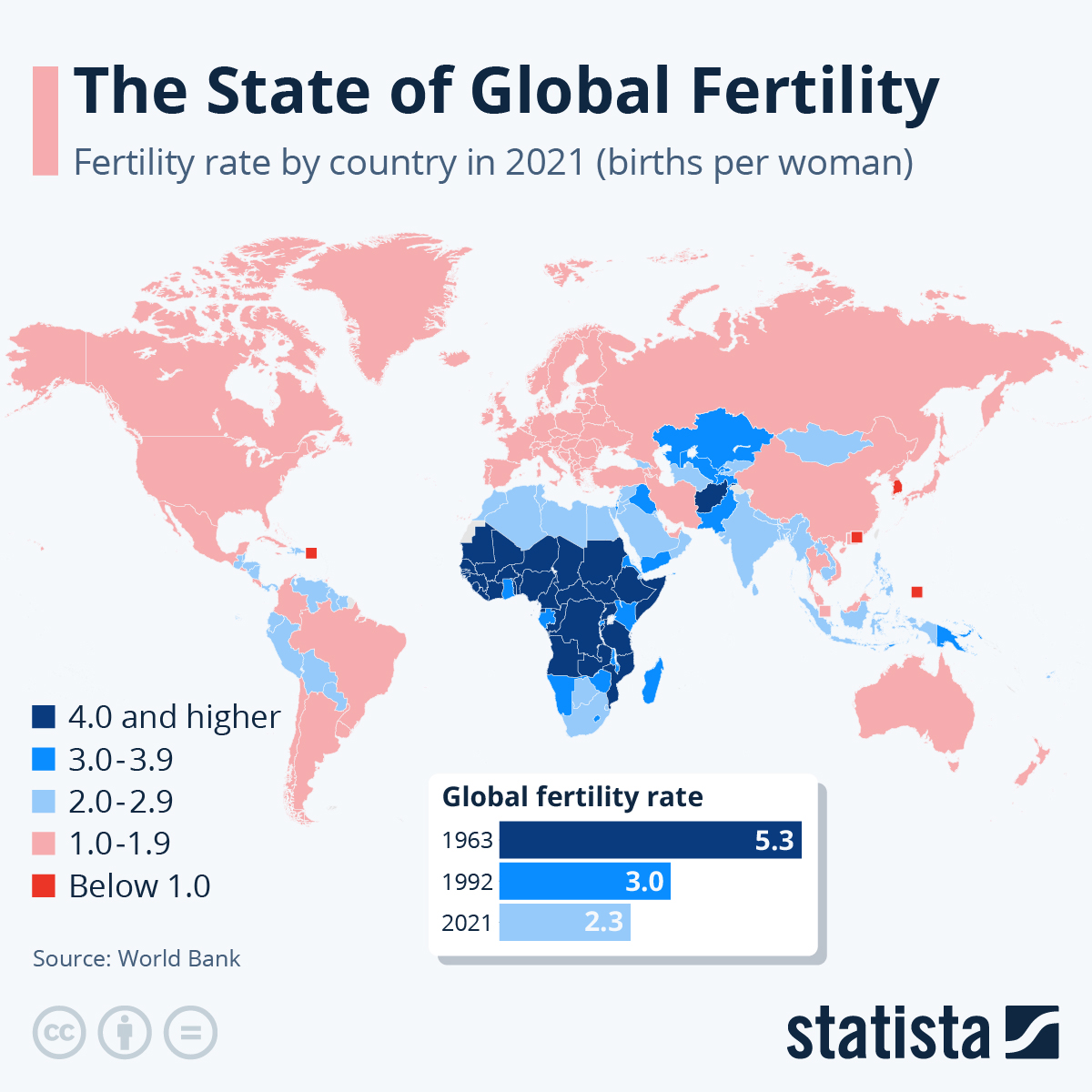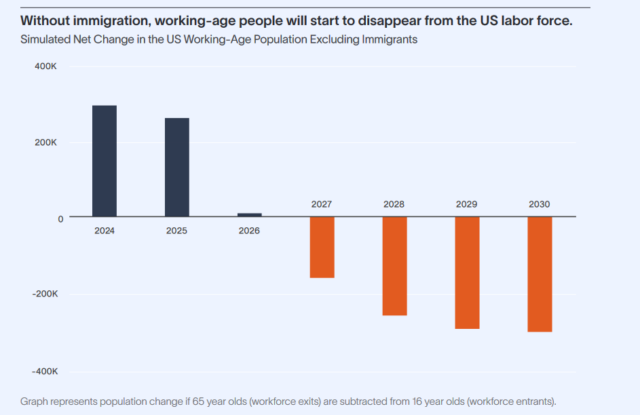
Ageing populations, declining birth rates across the Western world, and a significantly changing labour market. Yes, we’re all aware of it. It’s been looming for years, after all. But do we realize the enormous impact? Recent political developments across much of Europe suggest otherwise. If migration doors are completely shut, as some parties advocate, the global workforce — except in Africa and the Middle East — will shrink drastically over the coming decades, with significant consequences.
The same is true in the United States, according to a Bloomberg report based on a study by Lightcast on the U.S. labour market. If nothing changes, the U.S. will face a shortage of 6 million workers over the next ten years, according to the report. This isn’t just due to many people retiring but also mismatches and a steep decline in labour participation among men. This is partly because of demographic developments but also due to drug use and the high number of incarcerated American men.
More consumers than producers
“A storm is coming; are you ready for it?” asks Lightcast economist Ron Hetrick in response to the report. “In the next 5 to 7 years, the growth of our labour pool will not keep pace with that of our population. We’ll increasingly have more consumers than producers, leading to price increases and product shortages.” According to the report, older workers are no longer the driving force behind job growth in the U.S., as in the 20 years before the pandemic. Of the 5 million workers who have left the labour force since 2020, about 4 out of 5 were over 55. Working longer? In practice, that’s hardly the case in the U.S., the researchers say.
By 2027, the number of Americans turning 65 will, for the first time, be more significant than those celebrating their 16th birthday. This means not enough newcomers are entering the labour market to replace retirees. Another risk is the imbalance and mismatch between available workers and the jobs in demand. The U.S. workforce is becoming more educated and female, according to Lightcast. However, this supply does not match demand in sectors such as healthcare and construction and in jobs like plumbers or mechanics, where more than 90% of the workforce is still male.
4.6 million due to drugs or imprisonment
An equally concerning finding from the researchers is that many men in the prime working age group are unable to participate in the labour market due to an increase in drug abuse and incarceration. Addicts and prisoners together account for the disappearance of a staggering 4.6 million (!) Americans from the workforce. And this is happening at a time when there are more and more vacancies in “critical, male-dominated skilled-trade jobs.” At the same time, the number of unemployed Americans not looking for work has risen from 95 to 100 million since the pandemic.
Alcohol abuse in the U.S. is estimated to result in 232 million missed workdays, equivalent to 112,000 full-time workers being absent for an entire year.
In addition, according to Lightcast, 232 million workdays are missed due to alcohol abuse, which is equivalent to 112,000 full-time workers being absent for an entire year. The researchers believe that labor migration is, therefore, crucial to help offset some of the shortage of U.S.-born older men. Some industries are already struggling to function without it. According to Lightcast, 18% of healthcare workers are now from outside the U.S., including 1 in 4 doctors and 1 in 5 registered nurses.
Shortage of prison guards
The situation in Europe is similar to that in the U.S.. However, the number of addicts and prisoners is much lower here. Eurostat says almost half a million people are behind bars in the EU. That’s just over 100 prisoners per 100,000 inhabitants. The number of prisoners in the Netherlands has decreased since the pandemic, and the country is relatively low on the European list. The fact that we often hear about an overcrowding problem in Dutch prisons is not due to a lack of cells or an excess of inmates but rather… a shortage of prison guards.
Read the full Lightcast report on the U.S. labour market, including an analysis of Japan’s situation and lessons we can learn from it:
Lightcast Report









